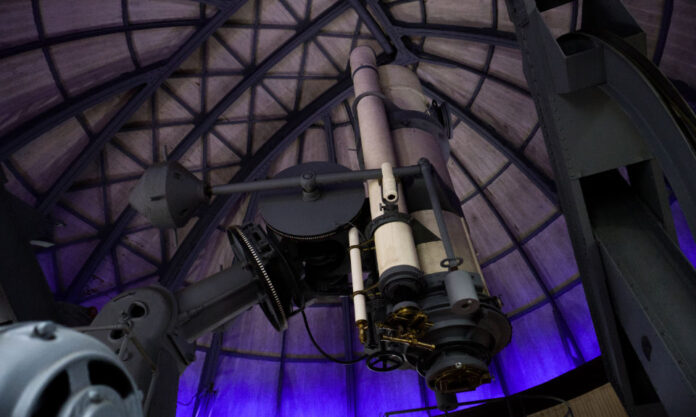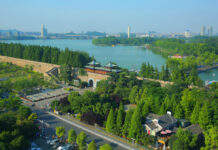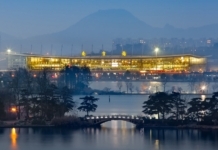They were the largest of their kind in the Far East at the time. Today, telescopes far and wide falling under the umbrella of Nanjing Purple Mountain Observatory continue to make significant contributions to astronomical observation. No wonder it is known as the “Cradle of Chinese astronomy”.
Located atop the third highest peak of Purple Mountain, the Observatory dates back to 1929, when it was proposed by Cai Yuanpei, President of the Central Research Institute and Academia Sinica. With construction completed in 1934, this was the first modern Observatory designed and built by China.
Large variations in topography necessitated many sets of steps be constructed linking the various buildings which make up the observatory complex. Simplifying matters, locally mined rubble was used for the job.
Once complete, the observatory was equipped with numerous celestial-related equipment, including a 600 mm reflector telescope, 200 mm refractor telescope and a double-layer prism spectrophotometer. Outside, visitors to the complex today will also find an armillary sphere, gnomon, theodolite horizon and much more.
The Observatory’s principal telescope had been purchased from German optics experts Zeiss and was the largest astronomical telescope in China at that time.
In September 1994, Purple Mountain Observatory established the Astronomical History Museum using ancient and modern astronomical instruments plus a large number of star maps and photos. The Museum has become an significant draw for science-based education and as a tourist attraction.
Put in to use, Purple Mountain Observatory participated in international measurement efforts, accurately determining the longitude and latitude of major cities such as Beijing, Shanghai and Nanjing itself.
Meanwhile, the Observatory is also credited by the Minor Planet Centre as discovering some 149 minor planets between 1955 and 1983.
Today, the 4A-rated scenic attraction occupies an area of 700 square metres and is a Key National Cultural Relics Protection Unit, one of 5,000 or so in all of China.
By way of a final nod to its origins, the Traditional Chinese characters for “Observatory” (天文臺) on the archway’s lintel, inscribed by Lin Sen, Chairman of the National Government, are well preserved to this day.












